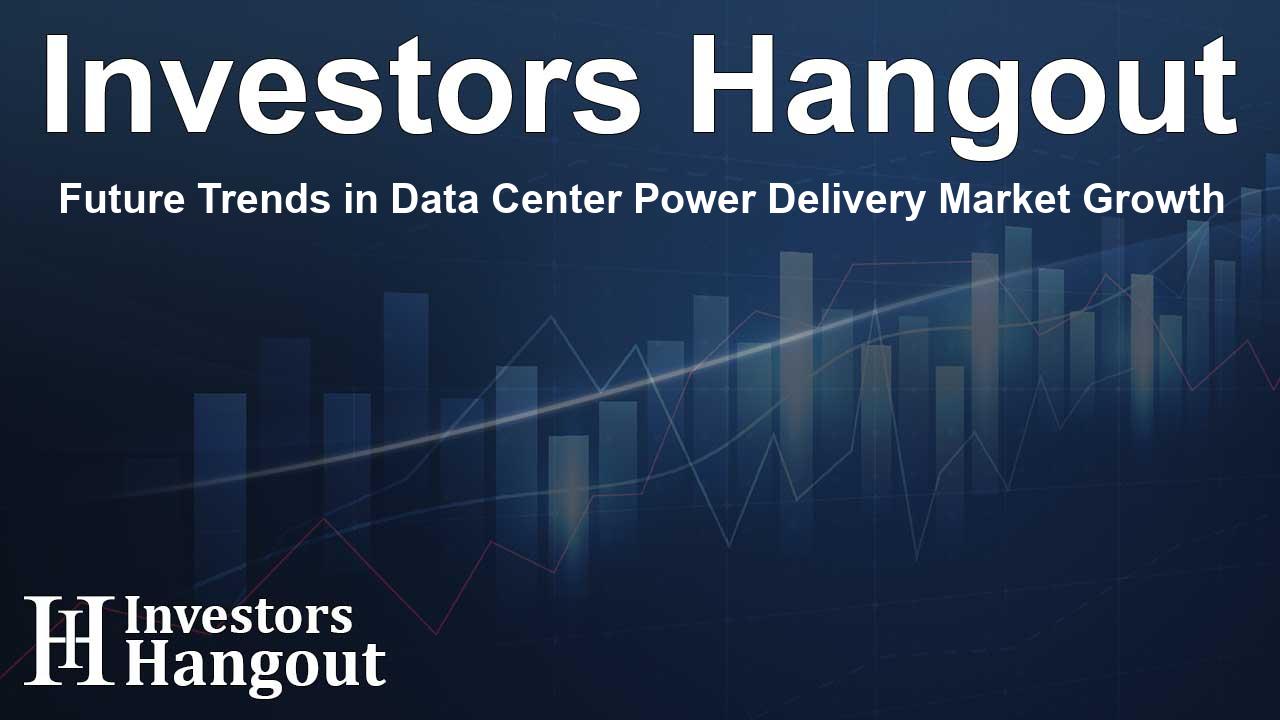Future Trends in Data Center Power Delivery Market Growth

Understanding the Data Center Power Delivery Market
The global data center power delivery market is set for remarkable growth, estimated at around USD 12 billion as of 2024. As our digitized world demands more efficient energy management, innovations in this field are rapidly becoming essential. The market is projected to surge to USD 25 billion by 2034, at a compound annual growth rate (CAGR) of 7.5%. This significant growth reflects the necessity for resilient, efficient data centers that are capable of supporting emerging technologies.
Market Drivers and Innovations
Several factors are driving the transformation of data center operations. Organizations increasingly adopt innovative power distribution technologies, including modular systems and digital monitoring solutions. These technologies optimize energy consumption and enhance operational control, enabling better management of resources. Furthermore, as sustainability becomes a priority worldwide, the integration of renewable energy sources into data center strategies is gaining traction.
Challenges Facing the Market
However, the path to progress is not without challenges. Supply chain disruptions, particularly in sourcing vital components like semiconductors, impact the timely development of power infrastructure. Additionally, rising energy prices and inflation pose significant operational costs for data center operators. The industry is also navigating more stringent regulatory requirements regarding energy consumption and environmental impacts, creating compliance issues especially for smaller companies.
Emerging Opportunities in Power Delivery
Despite these hurdles, the market is rich with opportunities. The growth of edge computing and the necessity for real-time data processing are prompting a redesign of data center architectures. There's an increasing demand for efficient, localized power delivery solutions to accommodate these new frameworks. Companies are also focusing on aligning their strategies with environmental sustainability mandates, exploring battery storage systems and AI-powered energy management platforms.
Segmentation Insights
The data center power delivery market can be divided into various segments based on product type, data center type, service type, and end-user industries. Key product types include Uninterruptible Power Supplies (UPS), Power Distribution Units (PDUs), generators, power cables, transformers, and rack power distribution systems. The UPS segment is currently the leader, accounting for nearly 30% of market revenue due to their critical role in ensuring operations during power outages.
Regional Markets Driving Growth
Regionally, the market is led by Asia-Pacific, which held approximately 40% of the global revenue in 2024. Rapid internet penetration and cloud adoption in countries like China and India are significant growth factors. North America, accounting for around 30% of the market, is bolstered by its lead in data center innovations and investments in hyperscale facilities. Meanwhile, strategies in Europe focus on creating sustainable infrastructure to comply with energy regulations.
Future Outlook and Technological Advancements
As we move forward, the landscape of the data center power delivery market is continuously evolving. A recent partnership between Schneider Electric and Google Cloud highlights the industry's push towards energy efficiency and sustainability within data centers. This collaboration emphasizes the importance of integrating advanced power management solutions with cloud capabilities, setting a standard in the market.
Additionally, product launches like the 'Vertiv™ Liebert® GXT5' UPS system demonstrate the industry's commitment to innovation, providing advanced solutions tailored to modern data center demands. Companies are focusing not just on performance but also on sustainability as tech giants look to shape the future of data management.
Frequently Asked Questions
What is the expected growth rate of the data center power delivery market?
The market is expected to grow at a CAGR of 7.5%, reaching USD 25 billion by 2034.
What are the key challenges in the data center power delivery market?
Major challenges include supply chain disruptions, rising energy costs, and stricter regulatory requirements.
How are companies integrating sustainability into data centers?
Organizations are incorporating renewable energy sources and AI-driven energy management systems into their operations.
Which segment currently dominates the market?
The Uninterruptible Power Supply (UPS) segment leads, comprising nearly 30% of market revenue.
What's the significance of edge computing in this market?
Edge computing is reshaping data center architectures, creating demand for localized power delivery solutions essential for real-time data processing.
About The Author
Contact Ryan Hughes privately here. Or send an email with ATTN: Ryan Hughes as the subject to contact@investorshangout.com.
About Investors Hangout
Investors Hangout is a leading online stock forum for financial discussion and learning, offering a wide range of free tools and resources. It draws in traders of all levels, who exchange market knowledge, investigate trading tactics, and keep an eye on industry developments in real time. Featuring financial articles, stock message boards, quotes, charts, company profiles, and live news updates. Through cooperative learning and a wealth of informational resources, it helps users from novices creating their first portfolios to experts honing their techniques. Join Investors Hangout today: https://investorshangout.com/
The content of this article is based on factual, publicly available information and does not represent legal, financial, or investment advice. Investors Hangout does not offer financial advice, and the author is not a licensed financial advisor. Consult a qualified advisor before making any financial or investment decisions based on this article. This article should not be considered advice to purchase, sell, or hold any securities or other investments. If any of the material provided here is inaccurate, please contact us for corrections.
